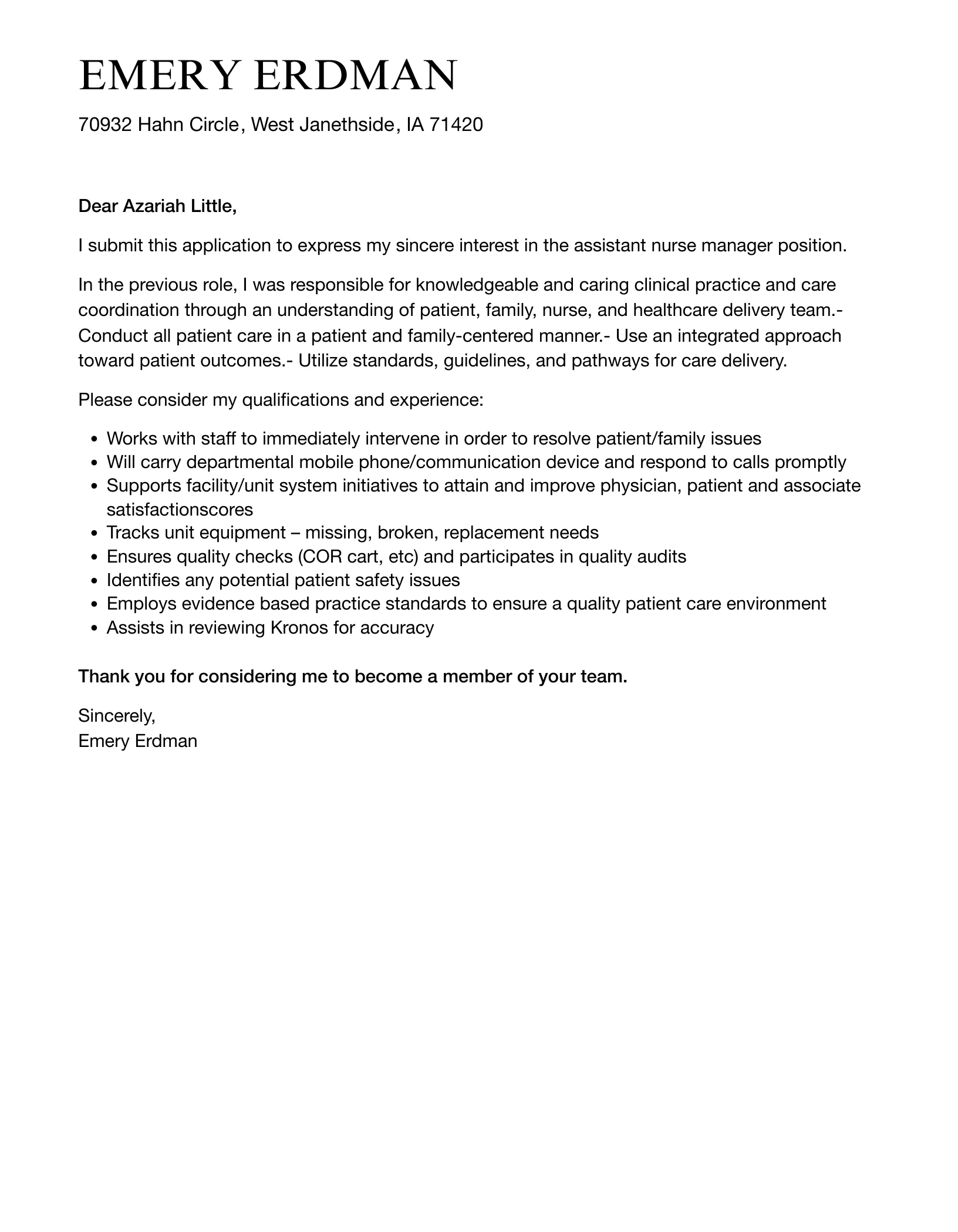Nurse Assistant Cover Letter: What to Include
A well-crafted nurse assistant cover letter is your first opportunity to impress a potential employer and secure an interview. It’s more than just a formality; it’s a chance to showcase your skills, experience, and passion for patient care. This guide provides a comprehensive breakdown of what to include in your cover letter, ensuring it stands out from the competition. Follow these steps to create a compelling cover letter that will increase your chances of landing your dream job as a nurse assistant. Remember to tailor each section to the specific job and facility you’re applying for.
Contact Information
Start your cover letter with clear and concise contact information. This section ensures the hiring manager can easily reach you. Accuracy is paramount, so double-check all details before submitting your application.
Applicant’s Name and Address
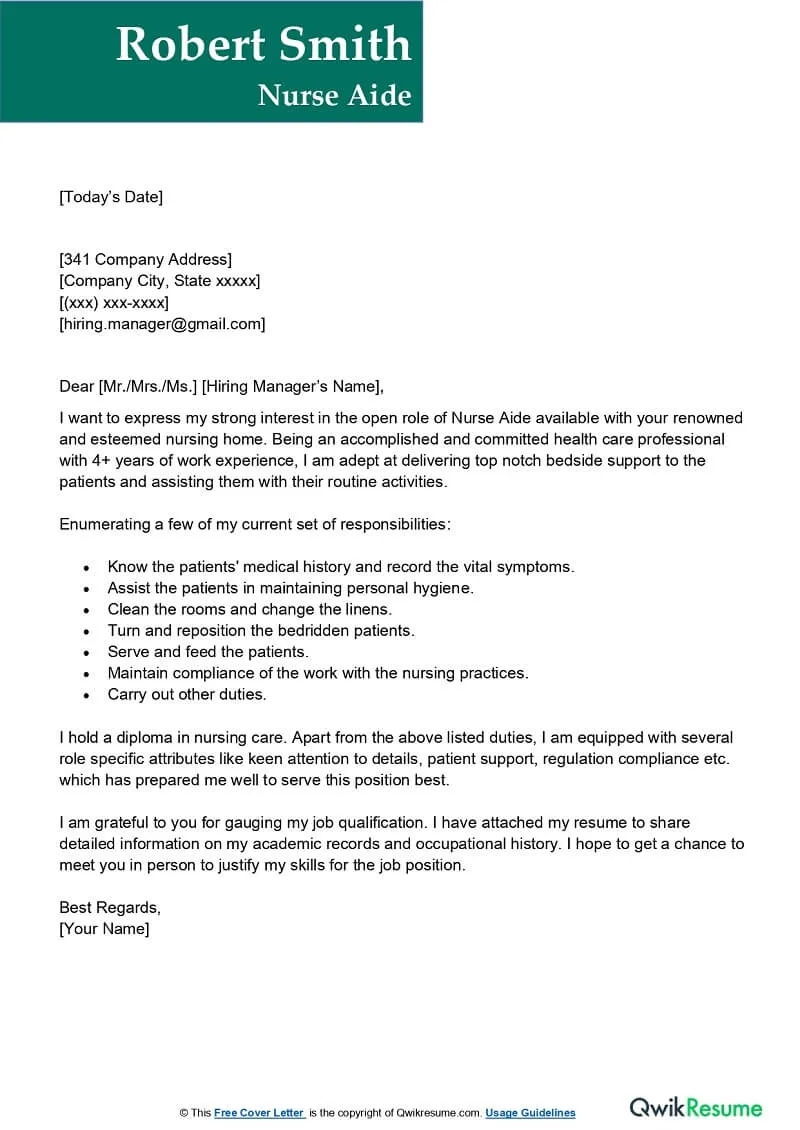
Begin with your full name, followed by your complete mailing address. Include your city, state, and zip code. This is standard practice and helps the employer organize your application.
Recipient’s Information
Below your contact information, include the recipient’s name (if known), title, and the facility’s address. Addressing your letter to a specific person shows you’ve done your research and adds a personal touch. If you can’t find a specific name, use a professional title like “Hiring Manager”.
Greeting
Start your cover letter with a professional greeting. If you know the hiring manager’s name, use “Dear Mr./Ms./Mx. [Last Name]”. If not, use a general greeting such as “Dear Hiring Manager”. Avoid outdated greetings like “To Whom It May Concern”.
Body Paragraph 1 Expressing Interest
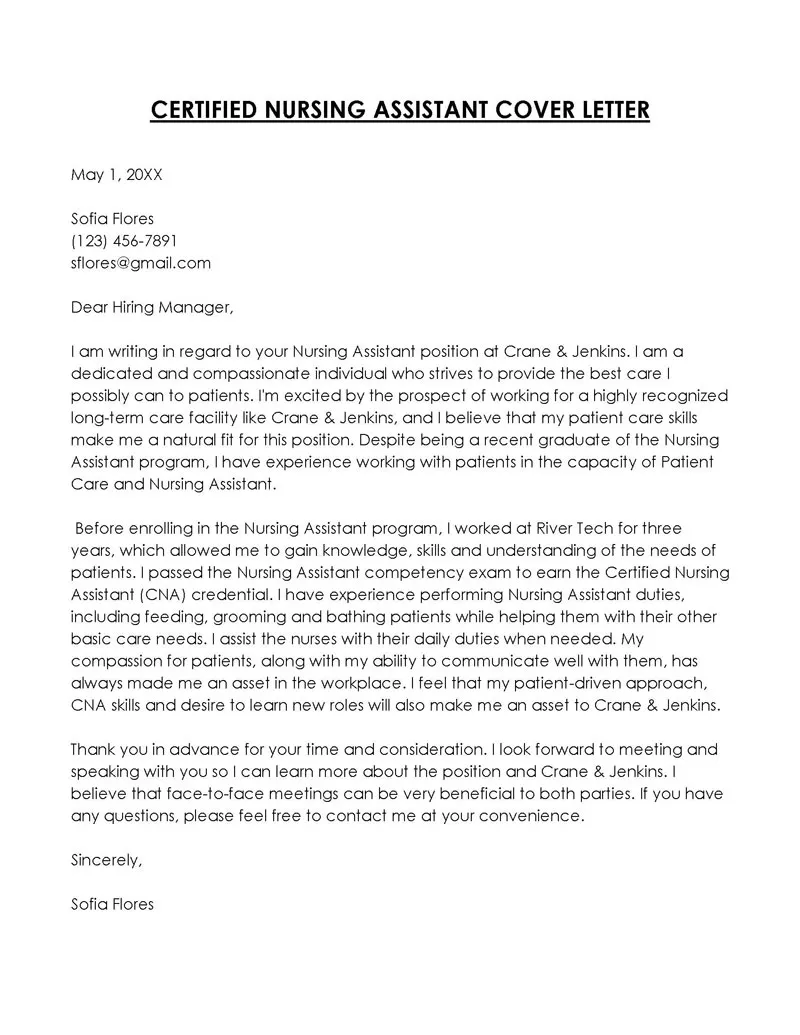
In the first paragraph, clearly state the position you’re applying for and how you learned about the opportunity. Express your genuine interest in the role and the facility. Briefly mention what attracts you to this specific position or organization. Demonstrate your enthusiasm and eagerness to contribute to the healthcare team. State the position you are applying for, and where you saw the job listing, and include a brief sentence about why you are interested in the role.
Body Paragraph 2: Highlighting Skills and Experience
This is where you showcase your relevant skills and experience. Mention your qualifications and how they align with the job requirements. Use specific examples to illustrate your abilities. Quantify your achievements whenever possible. For example, you could say “Successfully assisted in the care of 20+ patients daily”. Always tailor this paragraph to the specific job description, emphasizing the skills and experience the employer is seeking. Here is an example, ‘I have experience assisting patients with daily living activities, including bathing, dressing, and mobility assistance. I am proficient in taking vital signs, monitoring patient conditions, and providing emotional support.
Body Paragraph 3: Demonstrating Passion and Suitability
In this paragraph, explain why you’re a good fit for the facility and role. Highlight your passion for patient care and your understanding of the values of the organization. Describe how your personal qualities make you an excellent nurse assistant. Mention any relevant certifications or training, and how these have prepared you to excel in this position. Express your enthusiasm for contributing to a positive patient experience and working collaboratively with a healthcare team. Show how your values align with the facility’s mission and vision.
Closing

Conclude your cover letter with a professional closing that reiterates your interest and next steps. This section reinforces your enthusiasm and makes it easy for the employer to contact you.
Complimentary Close
Use a professional and courteous closing phrase such as “Sincerely”, “Respectfully”, or “Thank you for your consideration”. Avoid informal closings.
Signature
Leave space for your handwritten signature, followed by your typed name. If submitting electronically, type your name and ensure your contact information is clear.
Key Skills to Showcase in Your Cover Letter

Highlighting the right skills can significantly increase your chances of getting an interview. Tailor your cover letter to match the job description, emphasizing the skills the employer is looking for. Here’s a breakdown of key skills to include, with examples to guide you. Focus on the skills mentioned in the job description, and provide brief examples to illustrate your abilities.
Patient Care Skills
Demonstrate your ability to provide direct patient care. This includes assisting with activities of daily living, such as bathing, dressing, and feeding. Mention your experience with vital signs, medication reminders, and observing patient conditions. Emphasize your compassion and ability to create a comfortable environment for patients. Examples include assisting patients with mobility, providing support during mealtimes, or monitoring patients for any changes in their condition. Mention any specific training or certifications related to patient care. Ensure you are using phrases such as “Patient care”, “mobility assistance”, and “vital signs” in your cover letter to get more attention.
Communication Skills
Effective communication is essential in healthcare. Highlight your ability to communicate clearly and respectfully with patients, families, and other healthcare professionals. Mention your ability to listen actively, provide clear instructions, and document patient information accurately. Emphasize your skills in explaining medical procedures in a way that patients can understand. Include examples of how you handle difficult conversations or provide emotional support. Make sure to use “communication skills”, “patient interaction”, and “active listening” to get more attention.
Technical Skills
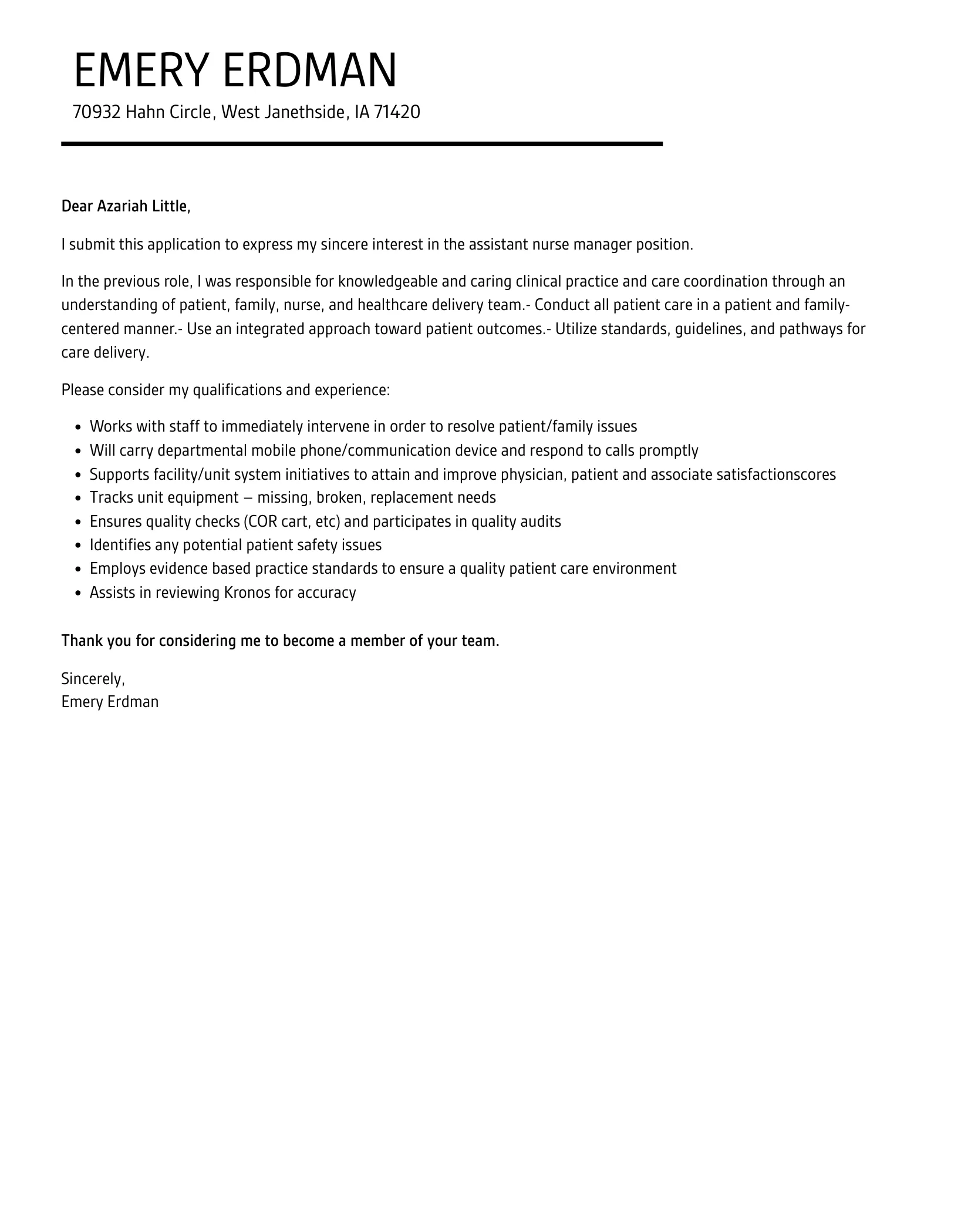
Showcase your proficiency in any technical skills relevant to the role. This might include taking vital signs, operating medical equipment, or assisting with medical procedures. Specify any certifications or training you have in these areas. Mention your familiarity with electronic health records (EHR) systems or other relevant software. Provide concise examples of your technical abilities to demonstrate your competence. Mention things such as taking vital signs, monitoring patient conditions, or assisting with medical procedures. Use terms like “medical equipment”, “EHR systems”, and “medical procedures” to get attention.
Soft Skills
Soft skills are critical for success in healthcare. Highlight your ability to work as part of a team, your problem-solving skills, your time management abilities, and your adaptability. Showcase your compassion, empathy, and patience. Provide examples of how you have demonstrated these skills in previous roles. Emphasize your commitment to maintaining patient confidentiality and ethical standards. Mention how you handle stress and work under pressure. Include phrases such as “teamwork”, “problem-solving”, and “time management.”
Formatting and Style Tips
The format and style of your cover letter can significantly impact the reader’s first impression. A well-formatted letter is easy to read and reflects professionalism. Here’s how to ensure your cover letter looks polished and professional.
Font and Font Size
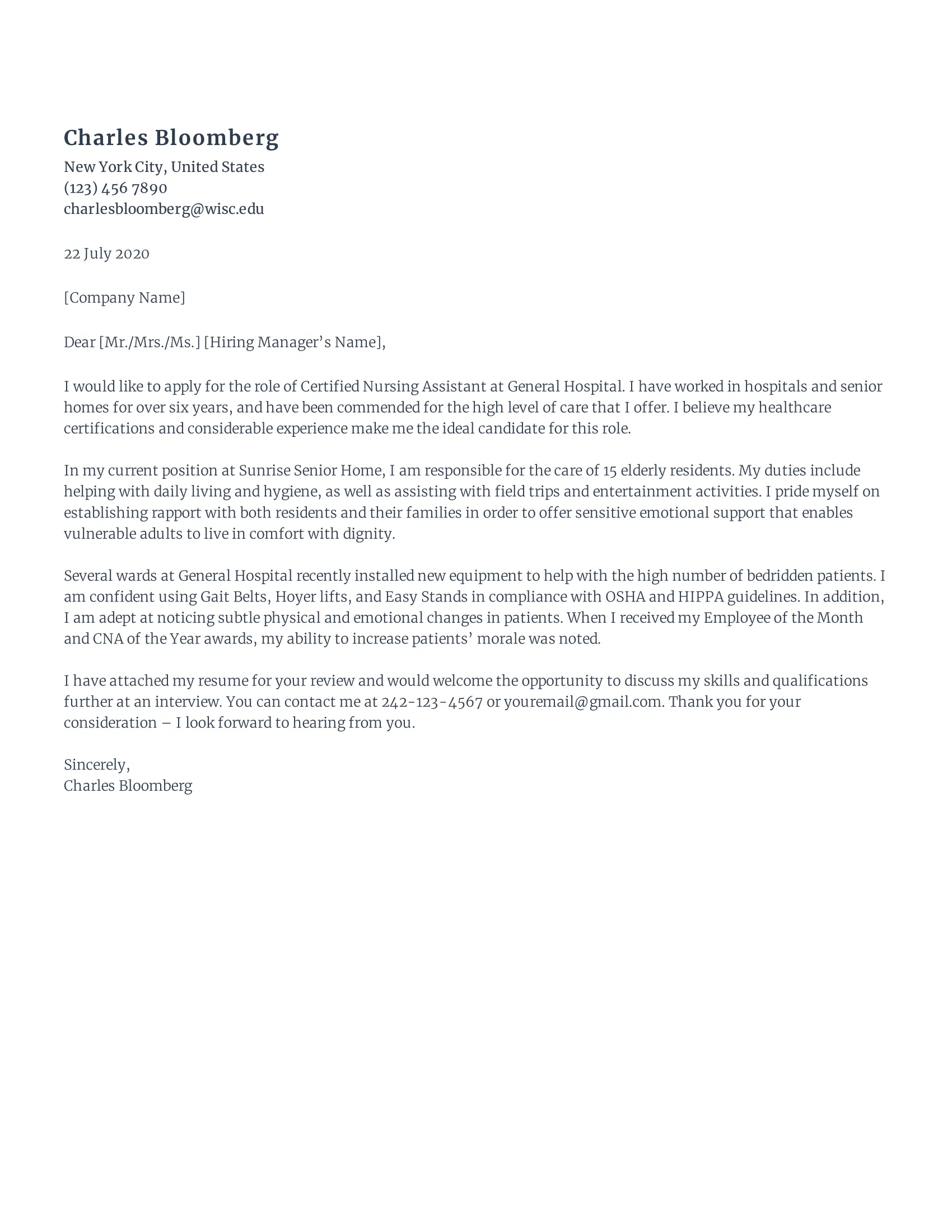
Choose a professional and easy-to-read font such as Times New Roman, Arial, or Calibri. Use a font size between 10 and 12 points. Ensure the font is consistent throughout the document. Avoid overly decorative fonts that can be difficult to read. Maintain consistency in font size and style throughout the document to enhance readability.
Length of the Cover Letter
Keep your cover letter concise and focused. Aim for one page in length. Use clear and concise language to convey your message effectively. Avoid unnecessary details or rambling. Focus on the most relevant information and use action verbs to describe your accomplishments. Brevity demonstrates respect for the reader’s time and helps keep your key points prominent.
Proofreading and Editing
Thoroughly proofread your cover letter for any grammatical errors, spelling mistakes, or typos. Check for proper punctuation and sentence structure. Have someone else review your letter to catch any errors you might have missed. Ensure your contact information is accurate. Errors can undermine your credibility. A polished and error-free cover letter shows attention to detail and professionalism.
Customization and Tailoring
A generic cover letter is unlikely to impress a hiring manager. Tailoring your cover letter to each job application is essential. This section provides guidance on how to customize your cover letter to maximize your chances of success.
Researching the Facility
Before writing your cover letter, research the healthcare facility you are applying to. Visit their website, read about their mission and values, and learn about the services they provide. Tailor your letter to reflect your understanding of the facility’s needs and goals. Demonstrating your knowledge of the facility shows your genuine interest and initiative. Align your skills and experience with the facility’s specific requirements and values.
Matching Skills to the Job Description
Carefully review the job description and identify the key skills and qualifications the employer is seeking. Customize your cover letter to highlight the skills and experiences that match those requirements. Use the same keywords and phrases from the job description to ensure your application is easily scanned by applicant tracking systems (ATS). Provide specific examples of how you’ve used these skills in the past. Show a direct correlation between your skills and the job requirements to demonstrate your suitability for the role.
Highlighting Achievements
Instead of simply listing your responsibilities, focus on your achievements. Use action verbs to describe your accomplishments. Quantify your results whenever possible, using numbers to demonstrate your impact. For instance, you can mention the number of patients you assisted or any improvements you made in patient care. Highlighting your achievements sets you apart from other candidates. Use metrics to showcase your successes. For example, you can mention improved patient satisfaction scores. Use strong action verbs to demonstrate your accomplishments.
Additional Tips for Success
These additional tips can further enhance your cover letter and increase your chances of getting an interview.
Use Action Verbs
Start your sentences with strong action verbs to create a dynamic and engaging cover letter. Use action verbs that highlight your skills and accomplishments. Some examples include “assisted”, “managed”, “implemented”, and “improved”. Action verbs make your accomplishments more impactful. Make sure to use strong action verbs to make your achievements more impactful.
Show Enthusiasm
Let your enthusiasm for the role and the facility shine through. Show your passion for patient care and your commitment to providing excellent service. Express your excitement about the opportunity to contribute to their team. Enthusiasm can leave a positive impression on the hiring manager and boost your chances of getting an interview. Your positive attitude can distinguish you from other candidates.
Follow Up
Follow up with the hiring manager or HR department a week or two after submitting your application. A brief email or phone call to reiterate your interest and inquire about the status of your application shows initiative. Thank the hiring manager for their time and consideration. Avoid being overly persistent. A polite follow-up demonstrates your interest and professionalism. It gives you a chance to reiterate your interest and enthusiasm.
